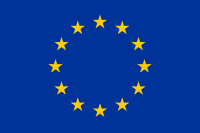8 Impact Areas
Explore the eight impact areas of digital cultural participation
Regarding the very important issue of environmental sustainability, what we know is that culture has the power to change behaviours into pro-social behaviours, and this can impact on a more sustainable lifestyle.
As literature has shown, (Arrighi and Walker, 2014; Chandler et al., 2014; Dal Farra 2014) the world of art and culture has played an increasingly important role in raising global awareness and participation around the environment and sustainability issues, such as the climate change, and demonstrated notable advantages over other forms of communication. Cultural Heritage digital collections and digital cultural activities on the issue of climate change, supported by the power of visual imagery and with the same value of digital activism, are fundamental for stimulating discussion and changing people’s behaviour toward a more active participation to contribute to a solution. Artists and environmental campaigners can use the commonalities of the artworks in this cluster in their own creative work and contribute to our understanding of the impact of activist art. (Sommer & Klöckner, 2021) Indeed, art allows people to visualise and focus on climate change extreme consequences as well as solutions and future panoramas, providing an increasingly public understanding of the matter and fostering policy-makers and researchers in implementing creative solutions (Roosen et al., 2017). Once again, the effectiveness of these well-recognized positive impacts can be amplified by the digital possibilities, and online cultural participation can have a fundamental role in fostering social mobilisation and awareness of the social consequences of individual behaviours linked to environmentally critical resources. Indeed, according to the last edition of the "Agenda21 for Culture", sustainability is a new area of cultural policy action with potentially significant macroeconomic effects that can reveal new opportunities for cultural professionals and guide the re-conceptualization of the traditional linear value chain of the creative and cultural industries; this shift, which has been embodied in the notion of the creative ecosystem, has been largely influenced by the new imperatives of the green transition and of socio-environmental sustainability models translated into small actions and large international activists movements mainly thanks to the media coverage of the virtual communities of Instagram, Facebook and Tiktok (Bernárdez Rodal et al., 2019; Stanley, 2020; Lehbrink, 2020; Hautea et al., 2021). This can reflect the growing emphasis on the social dimensions of sustainability and spark a reflection on the question of whether socially transmitted behaviours, habits and customs can influence the effectiveness of energy resource-saving programs. This huge revolutionary and rapid psycho-social process, that is occurring in - and thanks to the digital sphere, is leading cultural policymakers and creative and cultural professionals to reconsider creative processes in a holistic perspective, giving way to manifold processes and activities of creation, distribution, exchange, archiving of content in the creative industries ecology, and to enhance digital cultural participation and pro-social behaviours and actions (in particular, feeling responsible to commit to environmental enhancement goals).




